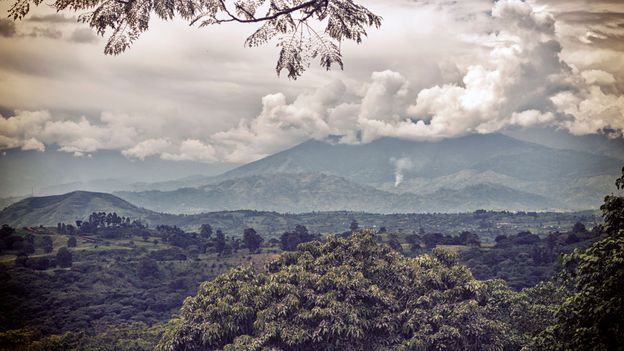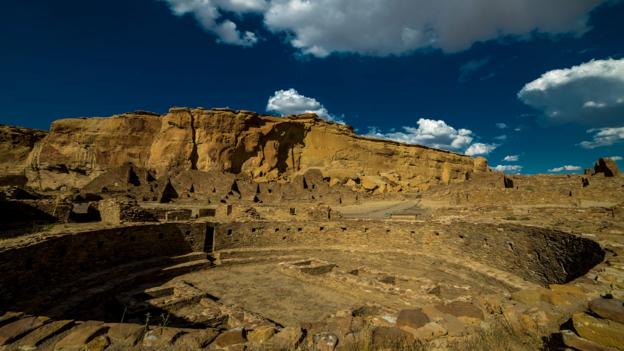Ryan Gardill used to love backpacking. Getting into the outdoors and covering ground was one of the Lancaster, Pennsylvania, native’s favourite things to do. But as the 29-year-old former US Marine’s joints and back began struggling to carry the weight of a backpack, he decided it was time to get on a bike.
That opened up a whole new world.
“I’d always dreamed of doing a thru-hike or bike,” he said. “A guy from work talked about a trail going from Pittsburgh to DC. I said: ‘That sounds awesome!’.”
So, in August, Gardill and his colleague embarked on a 350-mile journey, pedalling across converted railroad trails from western Pennsylvania to Washington DC.
The Great American Rail-Trail is the most ambitious biking initiative the country has ever seen
Passing through Pennsylvania, Maryland and DC, Gardill’s trip may seem like a major undertaking. Yet it’s just a small fraction of an unprecedented new scenic pathway aiming to traverse the United States from coast to coast.
The Great American Rail-Trail is the most ambitious biking initiative the country has ever seen. Stretching an extraordinary 3,700 miles from the nation’s capital across 12 states to the Pacific Ocean, west of Seattle, it’s an idea that’s been ruminating for 50 years. The Rail-Trail will connect more than 125 existing multi-use paths, greenways, trails and towpaths. An official route was announced to the public in May 2019 by the Rails-to-Trails Conservancy (RTC), the Washington DC-based non-profit leading the effort, when the trail was already more than half completed.
“Determining the route was a 30-year journey,” said Brandi Horton, vice-president of communications at the RTC.
The trail is largely built atop or next to abandoned railway lines (hence the name) with surfaces ranging from crushed stone to smooth asphalt. These railbanks – abandoned railway corridors converted into trails – account for more than 24,000 miles of multi-use trails crisscrossing the US.
Once it is fully completed – estimated to be before 2040 – almost one in six Americans will live within 50 miles of the route, and it will offer an unparalleled experience of the country people can’t see from 36,000ft or through a car window.
The timing couldn’t be better. According to an RTC study, in spring, trail use across the US spiked by 200%, in large part due to the coronavirus pandemic. With team sports and gyms mostly off people’s minds now and for the foreseeable future, the boom in outdoor, physically distanced activities such as cycling and hiking is expected to last for years.
I want rail-trails to be America’s Main Street
“I think [the pandemic] demonstrated to a lot of officials that access to the outdoors actually is key. Creating these connections is really critical,” said Horton.
Yet, the vision for the coast-to-coast trail isn’t just utilitarian; it’s a way to reveal how the US’ diverse tapestry of communities fit together, and how the country’s past connects to its present.
“I want rail-trails to be America’s Main Street,” the RTC’s co-founder David Burwell said back in 2006. Biking or hiking slowly across cities, towns and rural landscapes not only gives travellers a deeper understanding of local communities and cultures, but it also helps reveal the little-known histories that have contributed to the country’s identity.
On the East Coast, the trail starts in downtown DC, passing a stone’s throw from the Smithsonian Museums and the National Mall before heading north-west across Maryland. There, hikers and cyclists can overnight at a series of 19th-Century lockhouses along the Chesapeake & Ohio Canal, an Industrial Revolution marvel that played a pivotal role in providing troops’ supplies during the US Civil War. In the 1800s, these buildings were home to lockkeepers who collected canal tolls on the Appalachian lumber and coal that helped fuel the US’ westward expansion.
Most of the towns on the trail were once important areas to the future of America, only to be forgotten in time
According to Gardill, there are also dozens of open-ground camping “cut-outs” that have water wells and toilets along the rural sections of the C&O Canal’s Towpath, which runs 184.5 miles between DC’s Georgetown neighbourhood and Cumberland, Maryland.
For Gardill and his cycling buddy, a day on the trail would start at around 07:00 with coffee and breakfast. They’d then ride until 11:00, pedal into a local town and get some lunch. “We’d never pass up an opportunity for a beer, so we ended up stopping at five breweries,” he said. They’d get back on the trail and cycle until four in the afternoon before stopping, setting up camp and settling in for a night under the stars.
Gardill’s expedition saw him cross the Eastern Continental Divide close to the 3,118ft-long Paw Paw Canal Tunnel in Allegany County, Maryland. Eighty miles west, on the banks of the Potomac and Shenandoah rivers that cut through the Blue Ridge Mountains, is the steep, cobblestoned town of Harper’s Ferry, West Virginia – the furthest point north reached by Confederate forces during the Civil War and where abolitionist John Brown famously attempted to start a slave revolt in 1859 . “It’s absolutely beautiful. It’s like time has not touched the town since the 1700s,” he said.
“The trail connected me to [the US’] revolutionary and industrial history, as every town is filled with historical areas,” Gardill added. “Most of the towns on the trail were once important areas to the future of America, only to be forgotten in time.”
For him, part of the attraction of thru-biking is its simplicity. As well as a tent and sleeping bag, Gardill packed a portable burner to cook dehydrated meals, water bottles and water purifiers. “If you have a tent and a sleeping bag and a bike, you’re really set,” he said. He also recommends bringing along spare bike tubes, patch kits and a bike tool kit.
For those heading west, the trail passes through the heart of Ohio’s Swartzentruber Amish country, a community that completely eschews modern technology and continues to speak Pennsylvania German as their first language. In hollowed-out Rust Belt towns fighting to get back on their feet, the echoes of thriving manufacturing communities once linked by rail in south-west Pennsylvania and Indiana tell the story of boom-and-bust capitalism. Further west, the trail crosses the Mississippi River that famously inspired Mark Twain and has long shaped the US’ history and culture at Moline, Illinois, before spanning the Continental Divide in Montana. In Idaho, encounters with moose and other wildlife aren’t uncommon along the historic Coeur d’Alene trail that was carved out of mountainous rock by gold prospectors seeking their fortune in the mid-19th Century.
Nearing the route’s end, the ferry trip crossing the Puget Sound in Seattle is another highlight, as travellers pass through a region once home to thriving Suquamish, Duwamish, Nisqually, Snoqualmie and Muckleshoot Native American settlements before skirting the northern fringes of Olympic National Park, one of the largest temperate rainforests in the country. The lapping waters of the Pacific Ocean greet you at La Push, Washington.
While the broader health benefits of spending time outdoors are well-documented, trails along the “Great American”, as it’s known, are already playing a key role in helping revitalise economies in dozens of post-industrial towns across the US Heartland: Steubenville and Dayton in Ohio; Muncie, Indiana and Joliet, Illinois, all have burgeoning brewery scenes situated close to the trail. The Rails-to-Trails Conservancy estimates the trail could generate as much as $138bn for communities that build campsites, eateries and water and other adventure companies along the route.
Perry, Iowa, population 7,676, is one such place. Built around a rail route that opened in 1869 and closed less than a century later, its railway line has since been repurposed for recreational hiking and biking. With the Great American now passing through the heart of town and future sections connecting it with neighbouring Illinois and Nebraska, locals are hoping it can contribute to a revival.
“It is a huge thing and will bring many more people to Perry,” said Betsy Peterson, who runs an art and pottery business a five-minute walk from the trail.
You may also be interested in:
• America’s ‘fried chicken war’
• The Cuban building the world’s tallest bike
• The Alaska town where money grows on trees
Down the street, the historical Hotel Pattee, Perry’s landmark building, offers an indoor bike storage area as well as a repair station out front. “When people are out on a bike trip, it’s important they have some down time. I think Perry is a great place to stop and have a beer or a meal and relax,” added Peterson.
Embarking on such a major undertaking, however, hasn’t been easy. Large sections of the trail, particularly across Wyoming, where only 2% is currently completed, are yet to be built or mapped out. The Rails-to-Trails Conservancy has taken on the mammoth task of working with trail planners, local and state agencies, elected officials and governors’ offices along the route that has involved 250 meetings held over 18 months in 2018 and 2019. About 300 trail plans were studied to determine the route.
“We wanted to be sure that the route would meet local and state needs, but that it would actually connect,” said Horton. “It was definitely a labour of love.”
Still, while some western states have work to do, in places such as DC, Maryland, Illinois and Pennsylvania, more than 86% of the route is already open.
It was on these quiet, forested trails where Gardill averaged 60 miles a day on his bike. Five days and two hours after setting off, he reached the National Mall in downtown DC.
“Riding this trail has shown me that America is filled with the kindest people you can hope to meet,” he said. “You are always only a few miles from a good meal and a conversation.”
His next step? Doing it all over again.
After all, he said, “I couldn’t just do it once.”
Join more than three million BBC Travel fans by liking us on Facebook, or follow us on Twitter and Instagram.
If you liked this story, sign up for the weekly bbc.com features newsletter called “The Essential List”. A handpicked selection of stories from BBC Future, Culture, Worklife and Travel, delivered to your inbox every Friday.



























